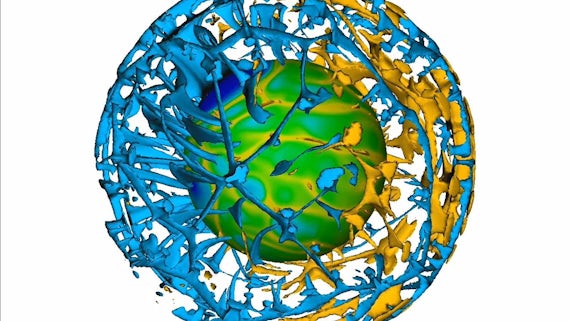How to break a supercontinent
22 Awst 2017

Research by Professor Huw Davies of Cardiff University’s School of Earth and Environmental Sciences and Dr Martin Wolstencroft (JBA Risk Management), demonstrates how supercontinents are broken apart by a combined set of processes.
A supercontinent comes into being when plate tectonics forges together most of the Earths' land mass through a series of collisions. The most recent supercontinet, Pangea, existed during the late Paleozoic and early Mesozoic eras approximately 335 million years ago and began to break apart about 175 million years ago.
Traditionally, researchers have debated whether supercontinets are broken by plumes of hot material that weaken the continent from below, or through long-range extensional stresses which can pull the continent apart from the sides. The research team discovered that both processes were in play.
The fundamental principle, detailed in a recent paper published in Solid Earth, is that large plumes require a global scale return flow in order to sustain their activity. This return flow produces additional extensional stresses beneath the supercontinent. Very large computer models were used to demonstrate this principle, which simultaneously shows both an upward movement, associated with plumes, as well as significant sideways flow in the upper mantle.
Following this principle, the researchers argue that any hypotheses around supercontinent break-up events should include both processes. These findings also motivate future study to understand the global perspective of supercontinental break-up.
